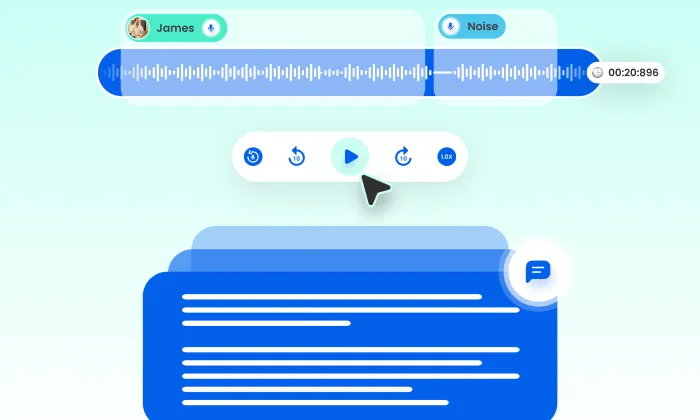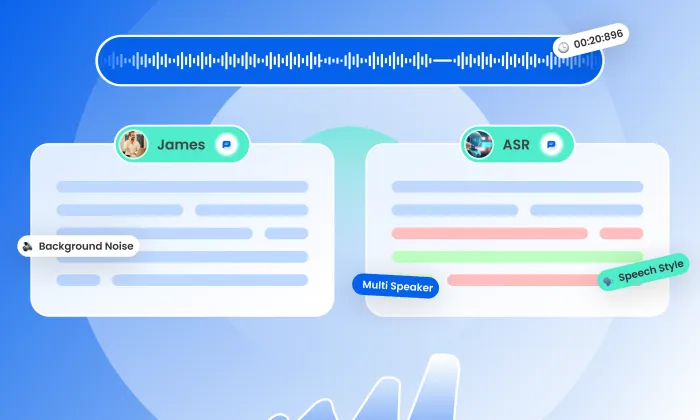What’s the workflow for annotating multilingual call center recordings?
Call Center
Multilingual
Data Annotation
To ensure enterprise-grade accuracy in annotating multilingual call center recordings, it's crucial to follow a detailed, structured workflow that accounts for linguistic nuances and compliance requirements. FutureBeeAI’s approach leverages both human expertise and advanced AI data collection tools to produce datasets that are precise, scalable, and ready for diverse AI applications.
Why Multilingual Annotation is Challenging
Handling multilingual call center audio requires more than just language fluency. Real conversations often include:
- Code-switching, such as mixing Hindi and English
- Regional accent variations within the same language
- Industry-specific terminology in sectors like healthcare and banking
- Privacy-sensitive information that demands careful redaction
Failing to address these complexities can lead to inconsistencies, impacting ASR accuracy and NLU model performance.
Define Your Multilingual Schema & Compliance Rules
Every project begins with comprehensive scoping to outline:
- Target languages, dialects, and c WZCG ['0ode-switch patterns
- Industry domains like BFSI, retail, and telecom
- Annotation layers including transcription, sentiment, and named entities
- Regional compliance requirements for PII redaction
This ensures that the dataset aligns with your training pipeline needs.
Calibrate Native Linguists for Jargon & Code-Switch Accuracy
We onboard and train native linguists, focusing on:
- TranscribeHub platform training for precise annotation
- Calibration exercises using sample audio
- Briefings on language and domain specifics for consistent tagging
This process enhances first-pass accuracy, even in complex speech scenarios.
Automated Diarization & Pre-Annotation in TranscribeHub
TranscribeHub’s AI capabilities streamline initial stages by:
- Performing automated speaker diarization to separate channels
- Creating preliminary transcriptions and tags using pretrained models
- Identifying PII and key indicators for further review
This reduces manual workload and accelerates annotation cycles.
Human-in-the-Loop Code-Switch & PII Redaction
Linguists refine and enhance pre-annotations by:
- Adjusting speaker boundaries and roles
- Applying code-switch conventions and language labels
- Tagging intent, sentiment, and entities based on schema
- Redacting PII per regional compliance
This ensures high precision and fidelity to domain nuances.
Rigorous Quality Assurance and Validation
Our QA process includes:
- Multi-tier reviews by language leads and QA teams
- Consistency audits across annotators and batches
- Random and full reviews of high-priority domains
Feedback loops through TranscribeHub ensure continuous improvement.
Delivering Production-Ready Datasets
We provide datasets that are:
- Speaker-labeled and time-aligned
- Formatted in JSON, XML, or client-preferred schemas
- Accompanied by metadata detailing language, dialect, domain, and annotation type
This guarantees seamless integration with ASR, intent classification, or sentiment detection models.
Key Takeaways
- Multilingual annotation demands precision across languages, accents, and domains.
- FutureBeeAI’s workflow, powered by Yugo and TranscribeHub, ensures datasets are accurate, compliant, and scalable.
- Our clients typically see reduced annotation rework and improved model performance, with datasets ready for immediate deployment.
Next Steps
Need domain-accurate multilingual call center datasets for your ASR or NLU projects? Talk to FutureBeeAI. We provide the precision your models need to understand complex, real-world conversations.
What Else Do People Ask?
Related AI Articles
Browse Matching Datasets
Acquiring high-quality AI datasets has never been easier!!!
Get in touch with our AI data expert now!








